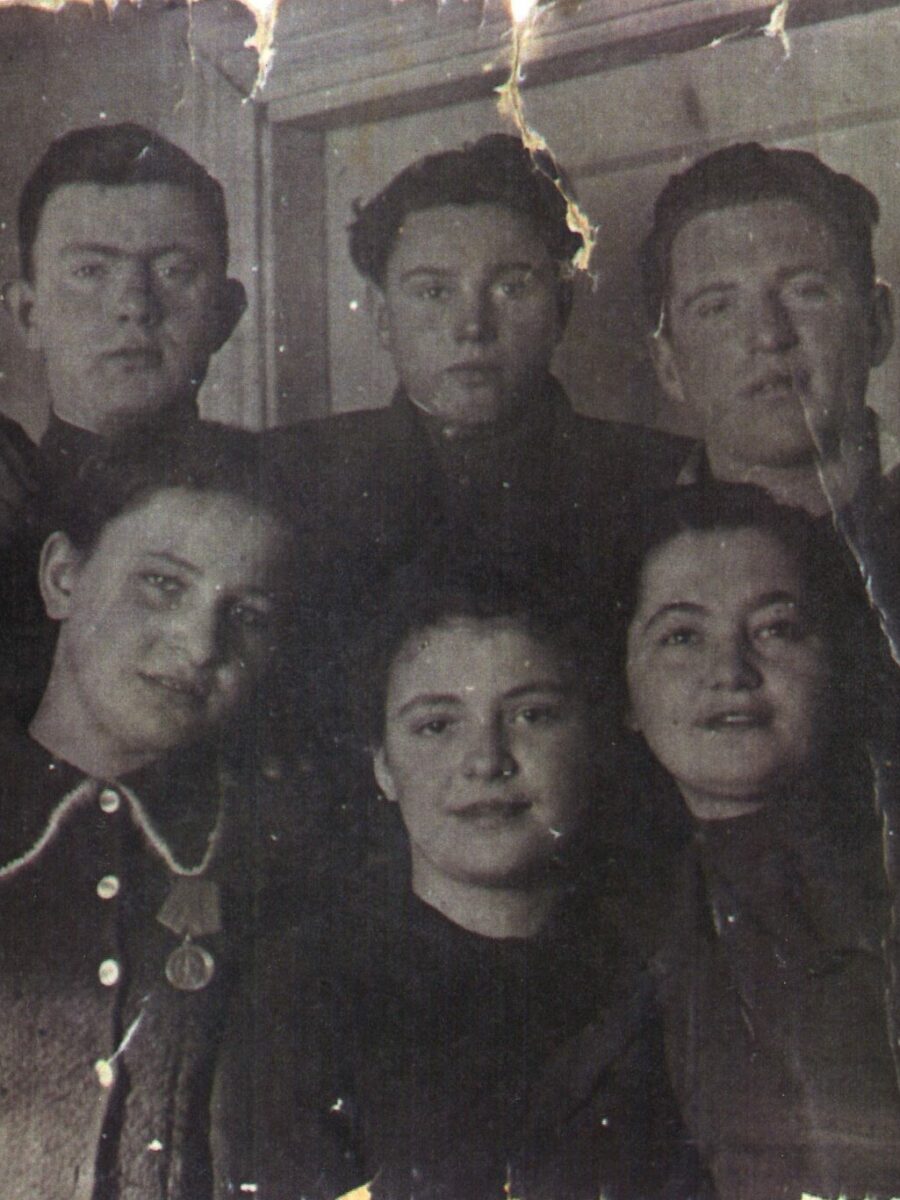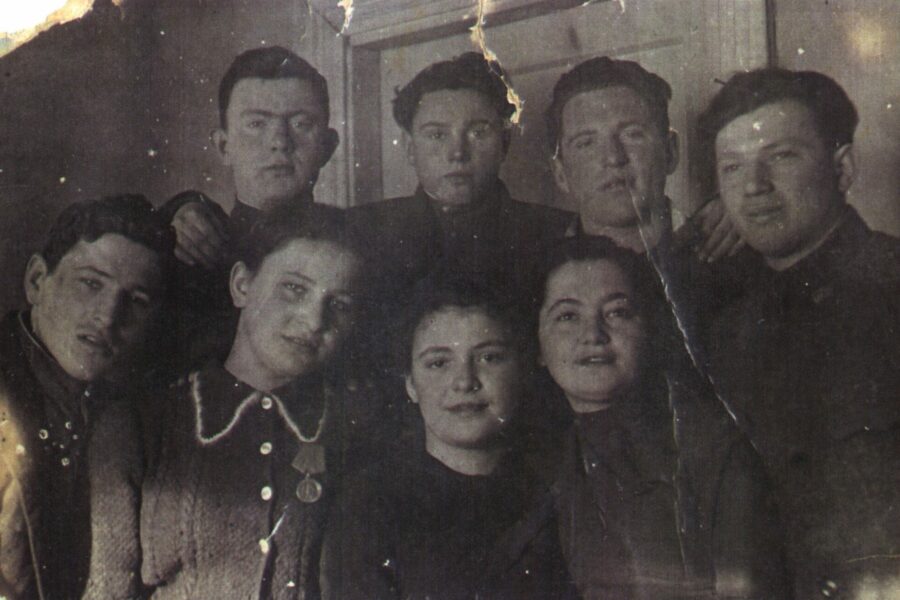Slava Fintel, nee Cymer, was born on June 2, 1932,in Szarkowszczyzna, in Eastern Poland. She was the youngest of seven children. The Cymer family had a large home that was actively used by the community. Slava’s mother Liba ran a restaurant and was very involved in charity in the community. Slava’s father Shmuel was a well-to-do merchant. Both of Slava’s brothers worked with her father.
In 1939, the Russians occupied Szarkowszczyzna. As Slava’s family was considered bourgeois, Soviets occupied the Cymer family home. In July 1941, the Germans occupied the area and set up a ghetto. The family lived in the ghetto until it was liquidated in June 1942. Shmuel, Slava’s sister, Chaia, and her aunt were killed during the liquidation. While escaping the liquidation, Slava was separated from her family but found her sister, Tzila. They fled to the family farm of a Polish friend’s, Piotr Belevich. The girls hid in a hole in the barn covered in hay that Piotr had dug. Eventually, Tzila was allowed to go into the house as a “Polish cousin”. Slava remained in hiding in the barn alone for the rest of the summer.
At the end of the summer, the Germans announced that any survivors of the original ghetto’s liquidation would be given refuge and work in the Glubokoye ghetto. Piotr discovered that the older Cymer sisters, their families, and Liba were alive and living in the ghetto. Slava and Tzila decided to rejoin the rest of the family. At Liba’s insistence, Tzila went back to hiding at Piotr’s farm.
After a few months in Glubokoye, Slava’s mother paid for the whole family to be smuggled out to the Postawy ghetto. The family stayed there until late fall when the ghetto was liquidated. In the liquidation, Slava’s two older sisters, their children, and Liba were shot and killed. Slava was hit by two non-fatal shots and played dead. When the bodies of the dead were collected, Slava and her relatives were thrown in a wagon and dropped into a mass grave. That night, Slava crawled out of the pit. She walked for two days before finding the Belevich’s farm. Piotr gave her shelter and treatment until she was well enough to see Tzila.
Slava and Tzila learned that their brothers were with a partisan unit and decided to join them. Piotr organized weapons so that he and Tzila could leave the farm and join. Since Slava was still a child, she was not able to go. She stayed with another family in the woods for several months until her brother, Zalman, arranged for a weapon for Slava and brought her to the partisans. While there, Salva worked in the kitchen, retrieved the wounded from action, and patrolled. During this time Salva’s other brother was injured and transported to the Soviet Union.
In June, the area was liberated. The surviving family and Piotr returned to their hometown. Zalman and Piotr were drafted into the Red Army and Tzila was married. The family separated, and Slava went with a Zionist organization to Vienna for school. Tzila later reunited with Slava in Vienna.
Slava and Tzila and were placed in a Displaced Persons camp Wegscheid, Germany, before being moved to Ansbach, Germany where Slava studied nursing and German for two years. Slava stayed in Munich to finish her education while Tzila immigrated to the United States. Slava joined ORT, a vocational training organization, and was sent to Switzerland to study to become a midwife. She returned to Munich and worked in Bogenhausen for one year before she immigrated to Israel, where both of her brothers now lived. During her journey, Slava met her future husband, Mark Fintel. In Israel, Slava worked as a nurse and Mark worked at an architectural firm. Their son Dan was born soon after. Slava and her family stayed in Israel until the Suez Crisis in 1956. They moved to Brazil for a year before moving to New York to be with Tzila. Later, the family moved to Chicago where had two more children. Slava Fintel died in 2010.
Piotr Belevich moved to another village and contact between him and the Jews he had saved was renewed only in the 1990s. On October 22, 1998, Yad Vashem recognized Piotr Belevich as Righteous Among the Nations.
Edited from Slava Fintel Cymer, interview by Susan Rosenblum, USC Shoah Visual Testimony Archive, April 10, 1996.







